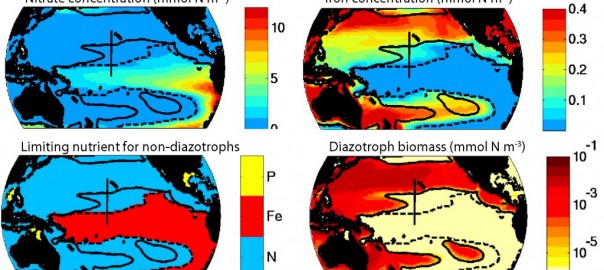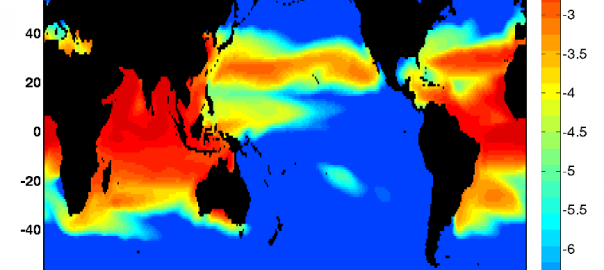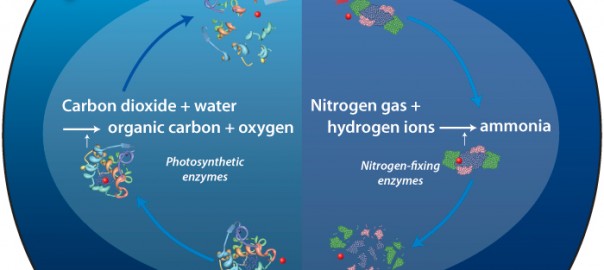Nitrogen is an essential component of all cells. It is used to make the amino acid building blocks of proteins, and is also required in the nucleic acids of DNA and RNA. Although nitrogen extremely abundant in the open ocean, it is mostly found in dissolved N2 molecules that cannot be used by most phytoplankton, who require nitrogen in its reduced, or “fixed” forms, such as nitrate or ammonium.
Continue reading Ecology of nitrogen fixers in the Pacific Ocean


